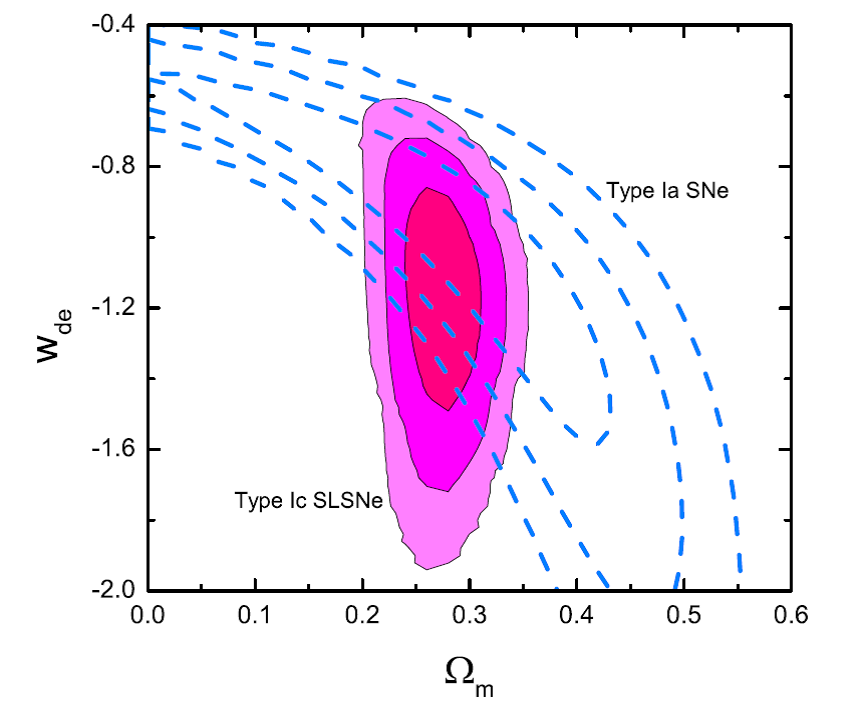It is quite evident that Type Ic super luminous supernovae (SLSNe Ic) may be useful cosmological probes, perhaps even out to redshifts much greater (z ≫ 2) than those accessible using Type Ia supernovae (SNe Ia). The currently available sample, however, is still quite small; adequate data to extract correlations between empirical, observable quantities, such as light curve shape, color evolution and peak luminosity, are available only for tens of events. Our simulations have also shown that a moderate sample size of ∼250 events could reach much tighter constraints on the dark-energy equation of state w_de and on the matter density fraction Ω_m than are currently available with the 580 Union2.1 Type Ia SNe. If SLSNe Ic can be commonly detected in the future, they have the potential of greatly refining the measurement of cosmological parameters, particularly the dark-energy equation of state w_de.

Figure 1. 1σ, 2σ, and 3σ confidence regions for the wCDM model using simulated SLSNe Ic (shaded, with red contours), compared with those (dashed blue contours) associated with the 580 Union2.1 Type Ia SNe.
The work by Jun-Jie Wei, Xue-Feng Wu, and Fulvio Melia has been published in The Astronomical Journal, please see AJ (2015), 149, 165 for more details (http://iopscience.iop.org/1538-3881/149/5/165/).
